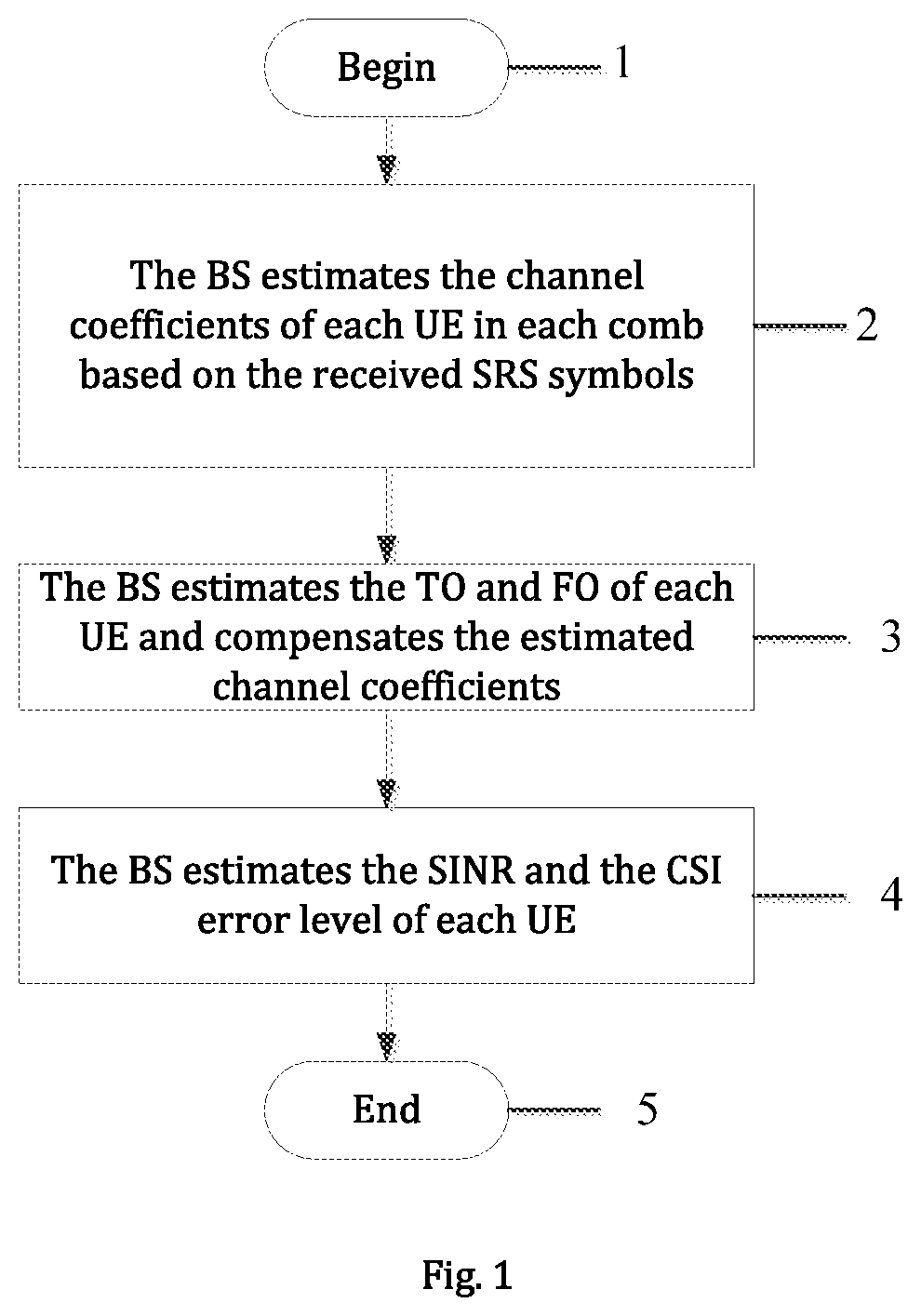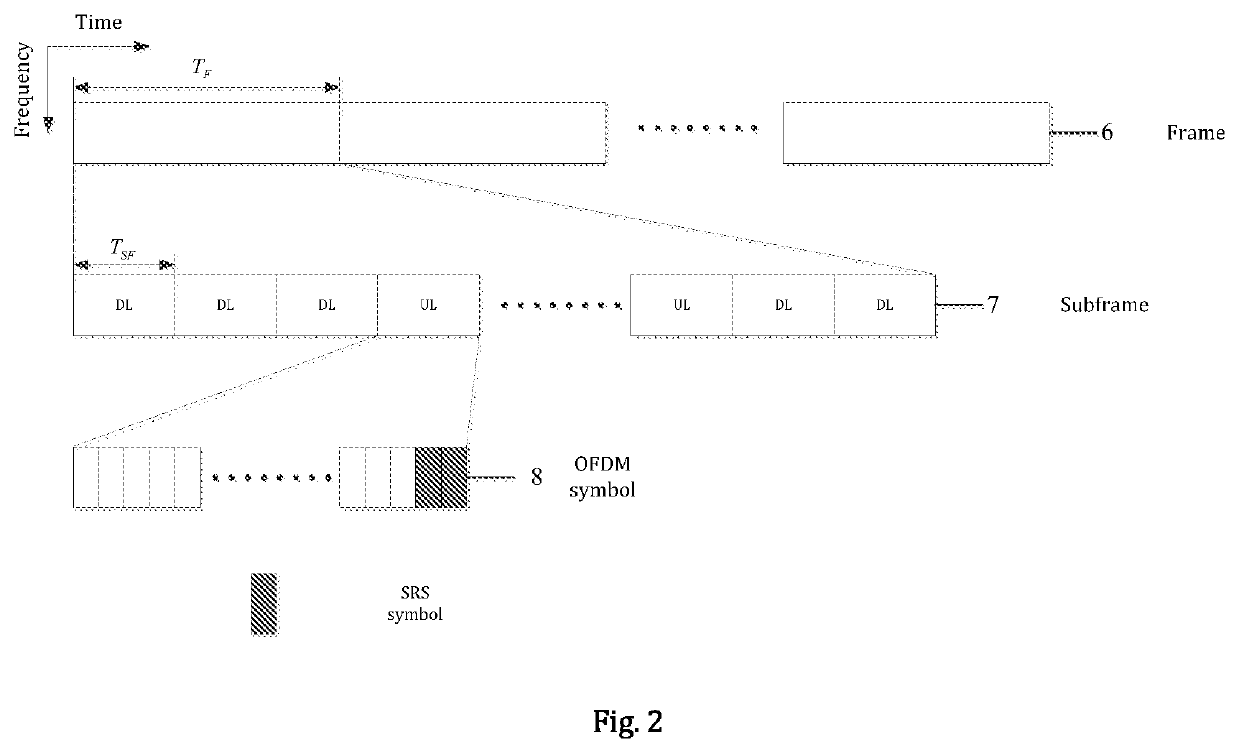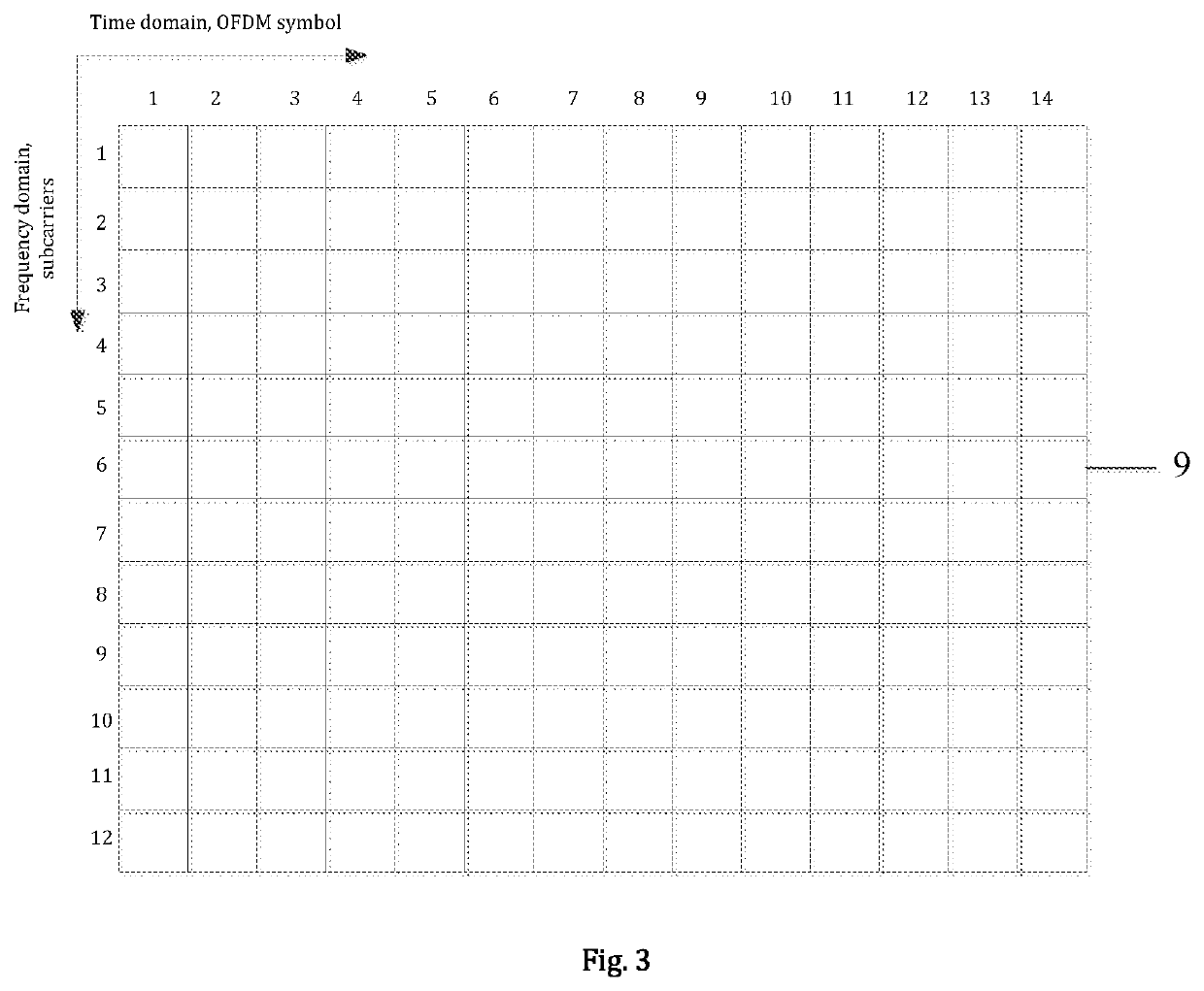Uplink signal to interference plus noise ratio estimation for massive MIMO communication systems
a communication system and signal interference technology, applied in the field of wireless communication, can solve the problem that the estimated sinr cannot accurately reflect the channel quality of each ue in the mu-mimo user group, and achieve the effect of enhancing the sinr estimation accuracy and estimating the sinr error level of each u
- Summary
- Abstract
- Description
- Claims
- Application Information
AI Technical Summary
Benefits of technology
Problems solved by technology
Method used
Image
Examples
Embodiment Construction
[0014]For a massive MU-MIMO OFDM communication systems, where the TDD mode is employed for uplink and downlink transmission multiplexing. The radio resource (time and frequency domains) allocation to the uplink and downlink is shown in FIG. 2, where the resource is organized in units of frame consisted of the whole bandwidth in the frequency domain and consecutive time duration denoted by TF in the time domain. One frame is divided into n subframes further, among which n1 and n2=n−n1 subframes are reserved for the downlink and uplink transmission respectively. Note that the numbers and the indices of downlink and uplink subframes are configurable in a frame. One subframe is consisted of Nsym OFDM symbols in the time domain. FIG. 2 shows an example of the structures of frame 6 and subframe 7. One subframe 7 is consisted of multiple Resource Blocks (RBs), where one RB is consisted of Nsc consecutive subcarriers in the frequency domain, e.g., Nsc=12 in 3GPP-LTE / LTE-A, and all the SC-OF...
PUM
 Login to View More
Login to View More Abstract
Description
Claims
Application Information
 Login to View More
Login to View More - R&D
- Intellectual Property
- Life Sciences
- Materials
- Tech Scout
- Unparalleled Data Quality
- Higher Quality Content
- 60% Fewer Hallucinations
Browse by: Latest US Patents, China's latest patents, Technical Efficacy Thesaurus, Application Domain, Technology Topic, Popular Technical Reports.
© 2025 PatSnap. All rights reserved.Legal|Privacy policy|Modern Slavery Act Transparency Statement|Sitemap|About US| Contact US: help@patsnap.com



